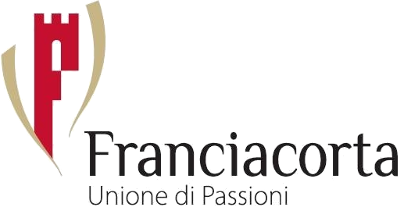CorteBianca is set like a gem, in the profile of a soil that has generated it. In Sergnana, in Provaglio d'Iseo, between the more gentle slopes of the foothill part of the northern Franciacorta and in a wider context where the denomination "pian delle viti" is a testimony of an ancient tradition linked to the wine. The rows grow on a slope facing the south, but protected by a hill from the excessive presence of the sun and the warm currents rising in the afternoon from the valley below. The microclimate is usually fresher than the other viticulture areas of the district, and gives us equilibrated ripening of the grapes even in the hottest years.
The finesse of the Franciacorta resulting has its base on this unique and peculiar climatic condition. The natural amphitheatre, shielded on every side, on which the vine plants rest makes sure that the risks for the integrity of the grapes are limited and the defence can be organised in a natural way. Indeed, CorteBianca has always adopted an approach based on the respect of the environment, the biodiversity and therefore the health of the costumers, as certified by the Istituto Mediterraneo di Certificazione for the organic production of grapes and wines.
The soil
The soil that feeds and sustains our vineyards is basically composed with two distinct and complimentary portions. The one most upstream is less deep though more clayey; with limestone layers, typical of the metamorphic original rock from which the mountain slope developed, have surfaced and develop a basically high level of pH. The iron, flushed by the meteorological events further upstream, had accumulated in the still inexistent clays and has painted them in red, offering a good degree of exchange for the basic nutritive elements.In this position the suitability is directed to the structure and the tasting persistence.
The lower land, instead, opposite to what usually happens, is more sandy while being deeper. The ancient passage of the draining water was evidently torrential and has removed the thinner parts leaving the site more permeable and fresh. In this area the pH is typically neutral and the soil drains quickly, remaining dry and ensuring a good balance of the plant, supporting the fresh and aromatic notes of the wines.
The organic farming
- exclusion of synthesis molecules that has been produced through chemical reactions managed by humans; • exclusion of organisms produced by genetic engineering;
- fertilization with manure or natural organic compost; • pest defence with the exclusive use of natural substances: mining sulphur and copper, natural plant extracts, beneficial organisms occurring in the environment;
- wine-making methods that imply only the use of natural substances and management of the transformation with the exclusive use of physical processes;
CorteBianca uses the same substances adopted by the winegrowers of the past, avoiding the risk of negative effects to the health produced by the new complex molecules. It provides a good protection to the vineyards, thanks to a careful work, and the constant study of the environmental context.

